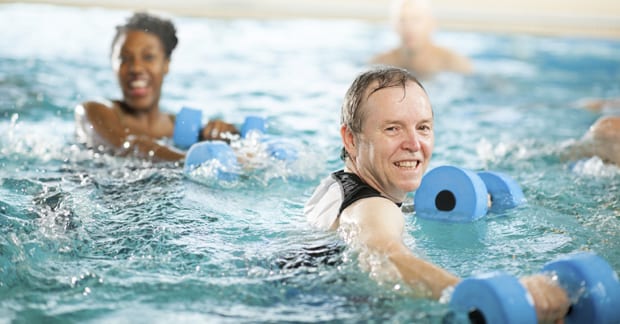Fibromyalgia (FM) is a condition associated with tight, sore muscles but no one REALLY knows where FM comes from or why it picks on certain people and not others. Some feel it’s caused by lack of sleep, specifically deep sleep, eventually resulting in chronically tight muscles. Others theorize it’s the underlying stress of a person’s lifestyle that leads to the tight muscles. Either way, tight muscles lead to poor blood flow through the muscle and pain results when the muscle is starved from lack of oxygen. Dr. Doris Cope, the director of Pain Management at the University of Pittsburgh Medical Center wrote that many people (especially FM patients) tense their muscles and probably don’t even realize it, which reduces blood flow to the muscles, resulting in pain. So, the question is raised, how can the FM patient get their muscles to relax so blood can flow through, bringing it the necessary amount of oxygen to the muscle so it doesn’t hurt?
One method to relax the muscles involves exercise. When the pulse rate increases, more blood reaches the muscle, which reduces pain. The studies are clear that walking, stretching, and strength training all help reduce fibromyalgia pain. Exercise also relieves fatigue, helps sleep quality, and reduces depression—WHAT A GREAT ANSWER for the FM patient! The key is finding the right combination of exercises and how much should one do. Our advice is to START SLOW and gradually increase the dose once you’ve proven good tolerance to the last workout session. Consider flexibility exercises (stretching) such as Yoga classes, walking around the block, or even playing golf (initially a few holes, then nine, and eventually a full round).
Many FM patients have found water exercises are uniquely helpful because of the weight reduction or buoyancy effect. This is especially true for the overweight FM patient as land-based exercises may be too traumatic on the feet/ankles, knees, hips, or low back. Also, warm water can be quite comforting. Another nice advantage of water exercises is that you can do these anywhere, as long as there is a pool! The exercises can be taught in a formal water exercise class, which is a good place to start if one is available locally or through a healthcare service. Studies conducted in Spain report that water exercises improve the FM patient’s quality of life not just for the moment, but also over the long term! Over a twelve-week time frame, researchers discovered that women who exercised in warm water for 60 minutes, three times per week improved both mentally and physically, had less FM-related pain, and more energy ("vitality") than those in a control group who did not exercise. The patients in the exercise group also reported fewer depression symptoms and found an improved desire to be sociable. The KEY for exercise to be successful is to increase the pulse rate. As Dr. Cope pointed out, a 20-minute, four times per week workout can make a big difference!
